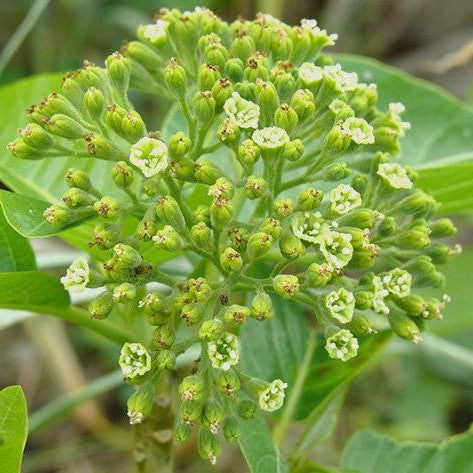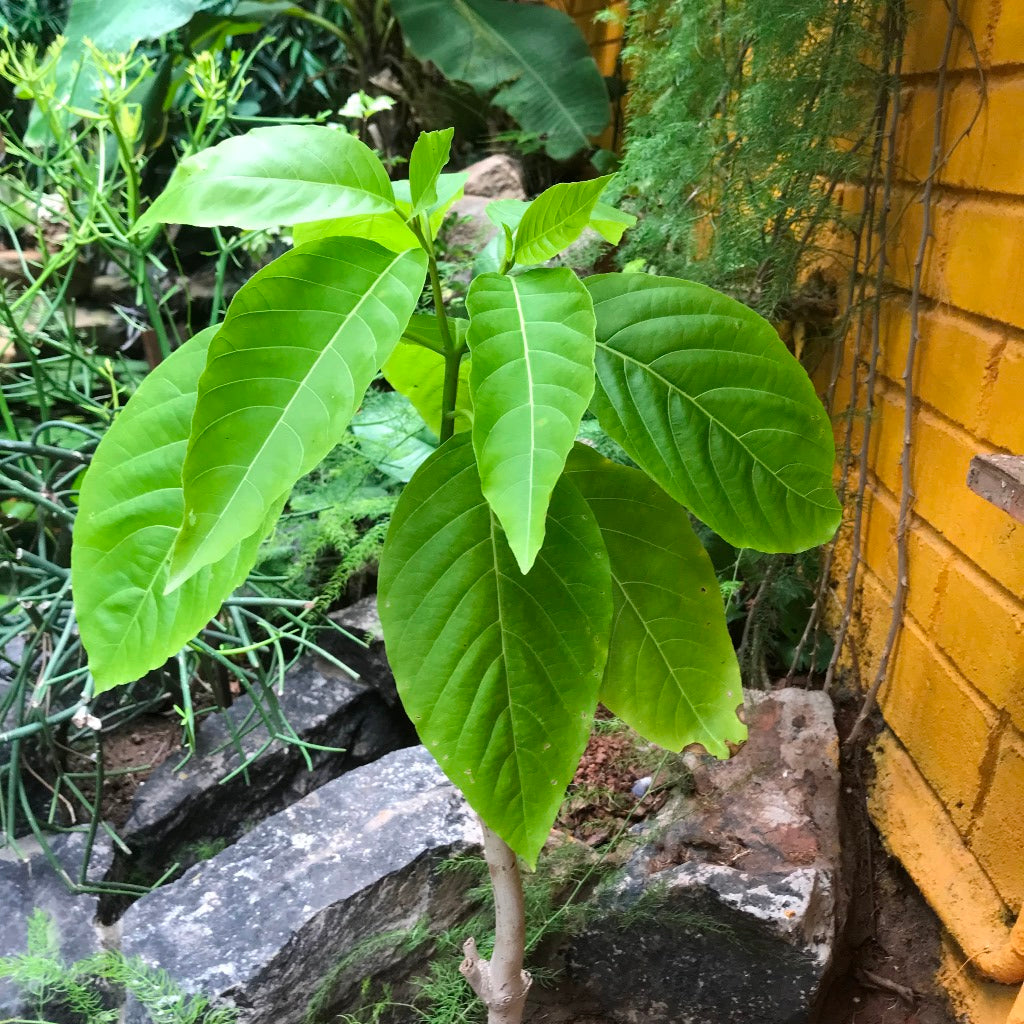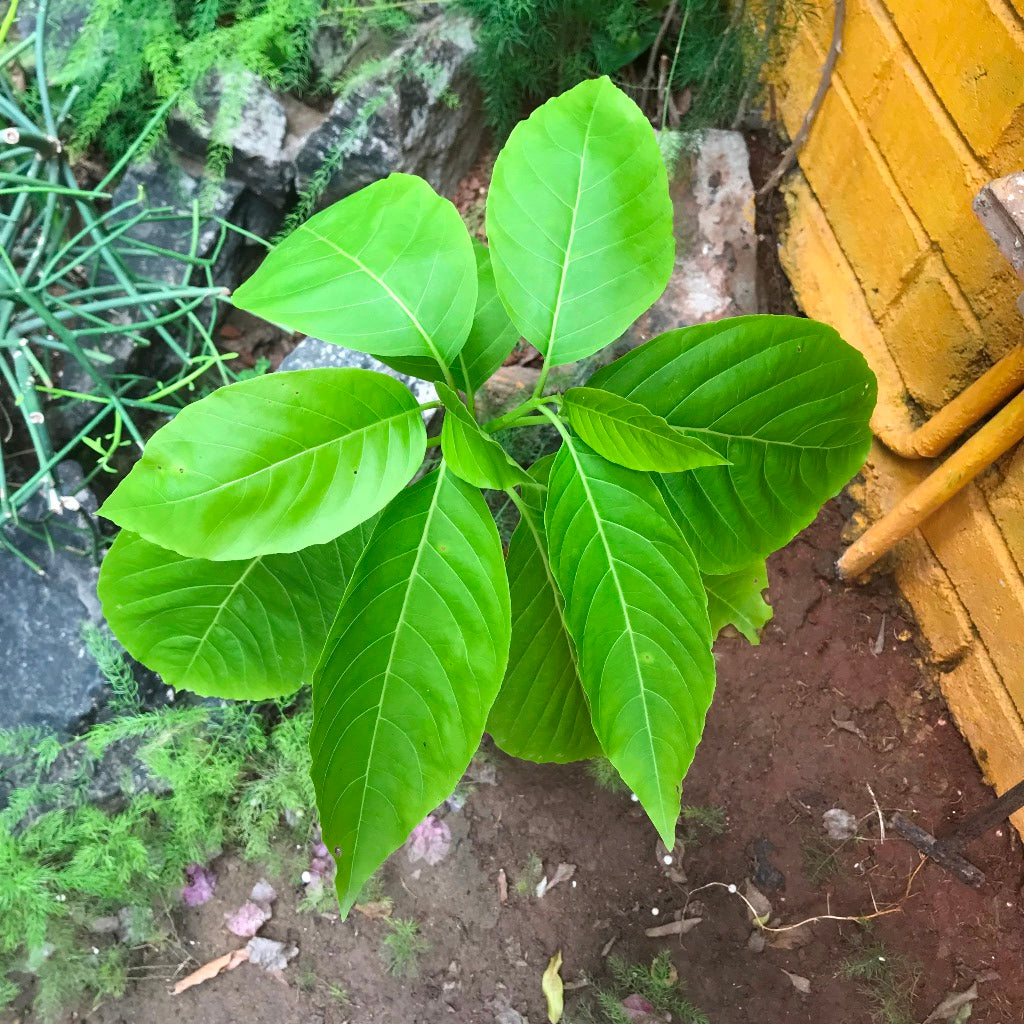Bird-catcher tree
Family
Nyctaginaceae
Origin
Andaman & Malay Island
Description
Pisonia grandis, commonly called bird-catcher tree, birdlime tree, lettuce tree or cabbage tree, is a soft-wooded, brittle-branched tree of the Bougainvillea family that grows to as much as 60-80’ tall. It is often found growing in dense stands on coral cays. Thickets of this tree are favored nesting sites for certain seabirds.
Long-petioled, elliptic, light green leaves to 12” long. The leaves are used in the treatment of dysentery.
Pisonia bears funnel-shaped, clusters of green sweet-smelling flowers that mature into sticky barbed seeds and bloom summer to fall. Female flowers give way to elongate cylindrical fruits with sticky prickles.
Environment
Pisonia requires a soil rich in potassium and a position in full sun or light shade. Water the plant frequently during the dry season. The soil should be constantly slightly moist, but not wet. In winter, water no more often than every 8-12 days. From spring to autumn liquid balanced fertilizer every 3-4 weeks. It responds well to fertilizing with organic fertilizer.
Landscape Uses
It can be planted as an avenue plant
















